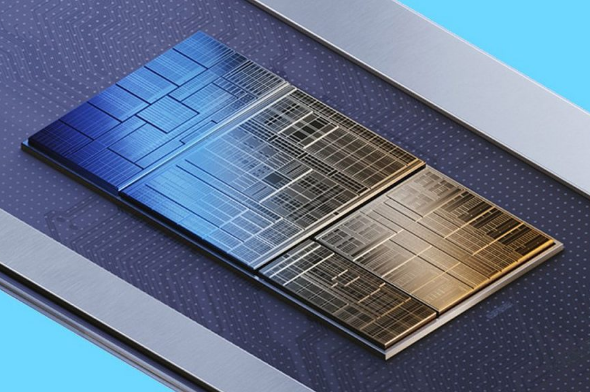Connection to DriversCloud Create a DriversCloud.com account Reset your DriversCloud.com password Account migration
Meteor Lake: integrated graphics solution puts AMD APUs to shame
The Meteor Lake generation isn't due to be used on our desktops, but it seems to have a lot going for it.
On December 14, Intel will officially present its next range of processors. This time, it won't be a matter of some vague upgrade, as was the case with Raptor Lake at the end of last year and, above all, Raptor Lake Refresh last October. No, the Meteor Lake architecture promises to be a minor revolution for Intel, which is making no secret of the very high ambitions it has for this new range, which is only scheduled for release on laptop machines. For desktop processors exploiting the architecture's new features, we'll have to wait until Arrow Lake, at the end of 2024.
But back to Meteor Lake. While we're waiting for official details from Intel, we can already indulge ourselves with a number of rumours and leaks. Most recently, and relayed by Videocardz, an ASUS laptop was spotted on the Geekbench database. The notebook was equipped with an Intel Core Ultra 7 155H processor, featuring 6 high-performance cores, 10 efficient cores and a total of 22 threads. Its fastest cores can boost up to 4.8 GHz, and its combined L2+L3 cache is 28 MB.
More importantly, the processor in question provided an opportunity to learn a little more about the on-board graphics solution. Indeed, laptop processors are often synonymous with integrated graphics, as manufacturers don't always have the space or inclination to fit a dedicated graphics card. In the case of the Core Ultra 7 155H, the graphics solution is an Intel ARC with 8 Xe-Cores capable of running at 2.25 GHz. In other words, it's the same configuration as on a dedicated - admittedly entry-level - Intel ARC A380 card. The only difference is that the dedicated card's PDT is 75 watts, whereas the graphics solution integrated into the Core Ultra 7 155H should be lower.
The fact remains that, equipped in this way, the Intel processor could well give AMD a run for its money, as its processors had little competition in the graphics field. In fact, most notebooks designed for "light gaming" ran on AMD. As you can see from the table summarizing the performance observed in Geekbench's OpenCL test, the Core Ultra 7 155H has nothing to be ashamed of in comparison with the Ryzen 7940HS, Ryzen 7840S and Ryzen 7840U: it scores better than each of these competitors. Even though AMD will soon be offering Ryzen 8000s, this is still excellent news for Intel... and for us!







